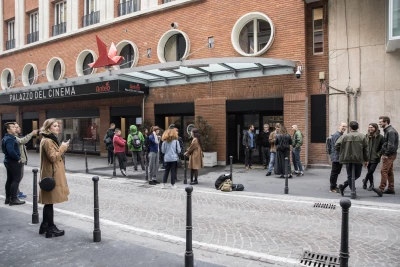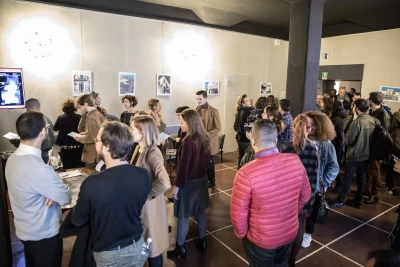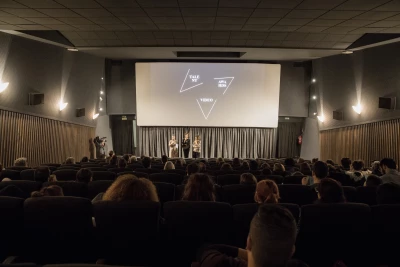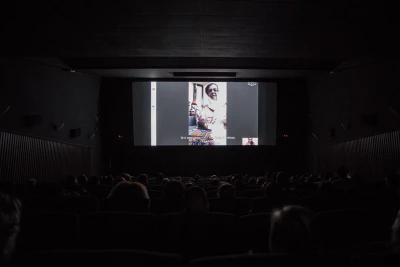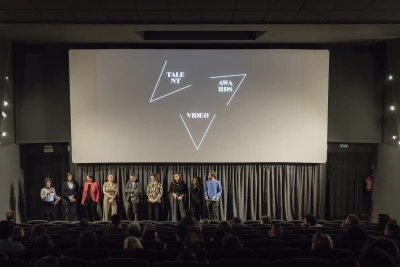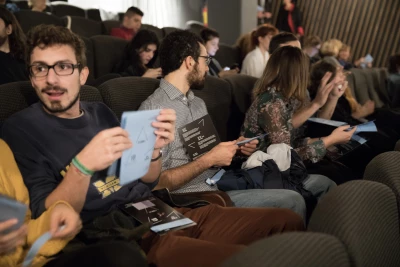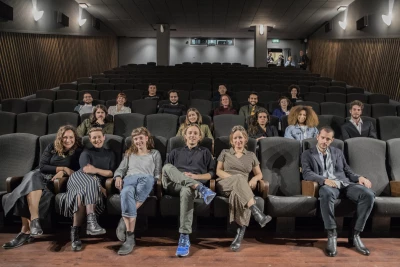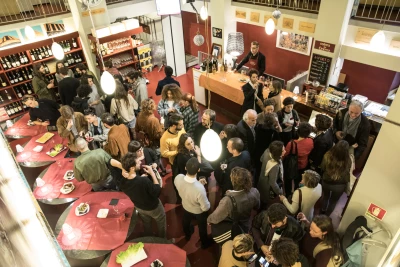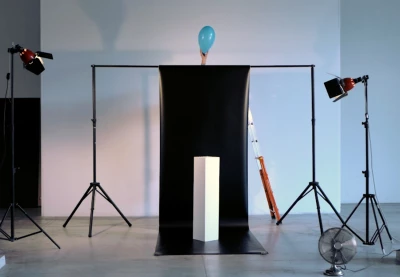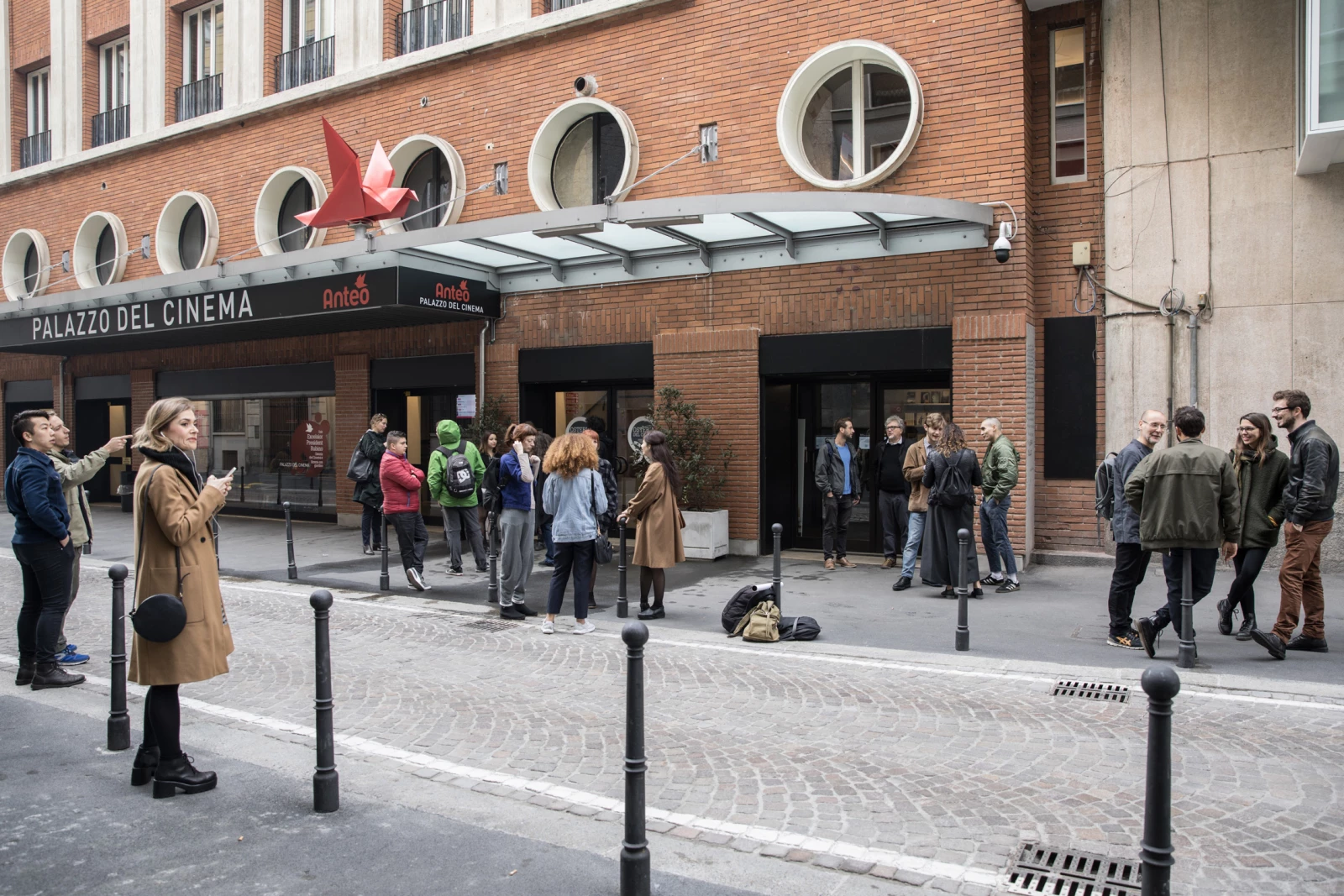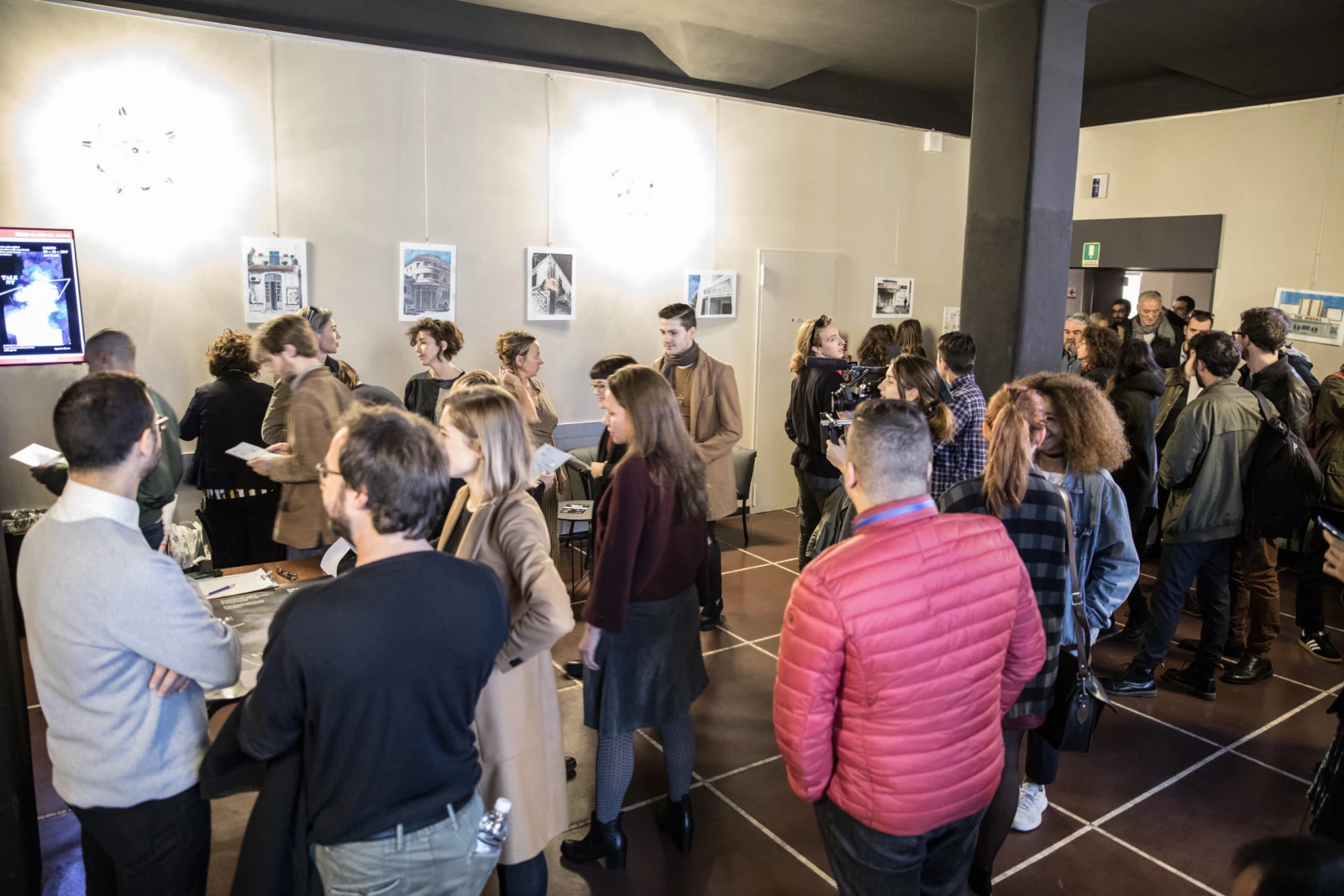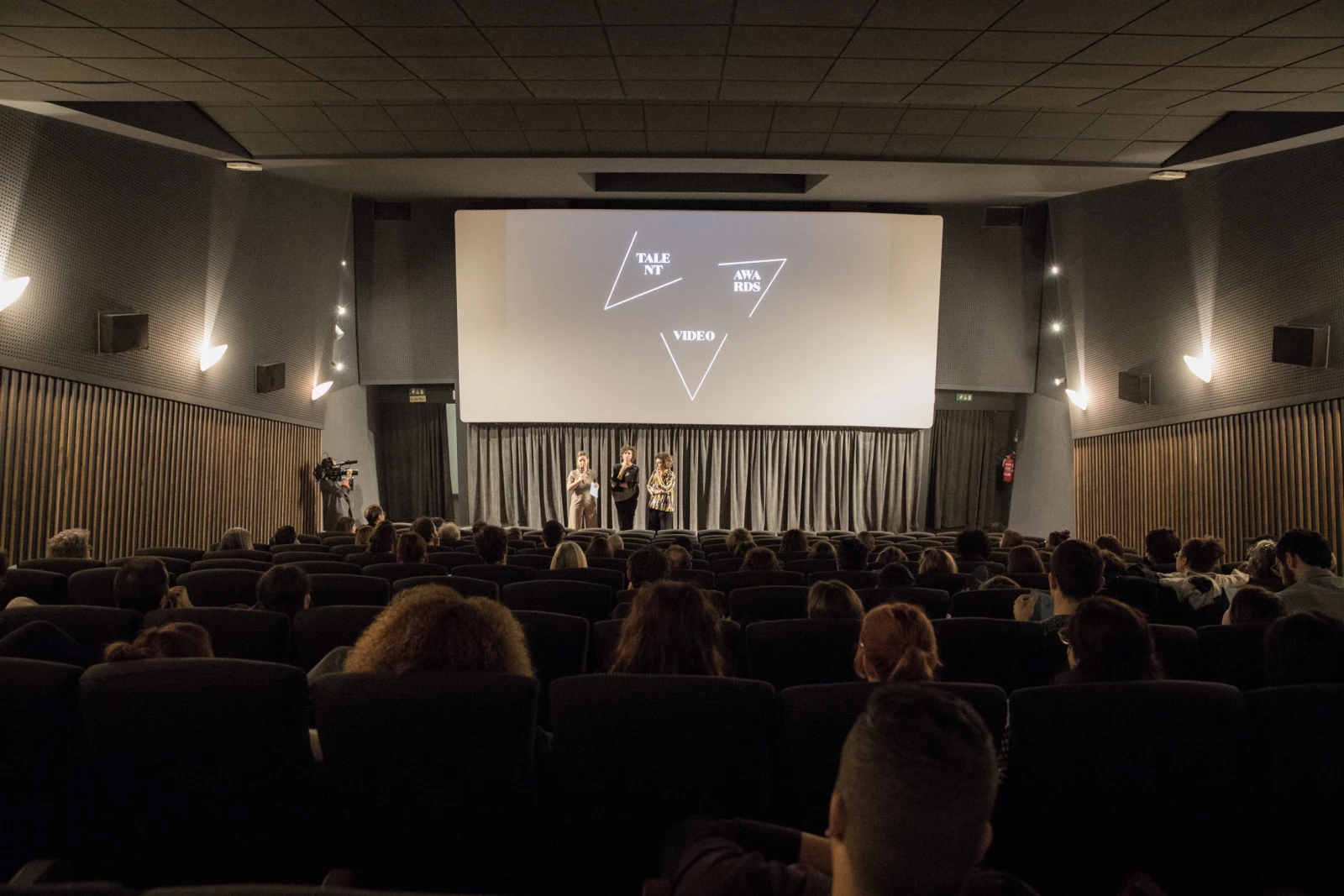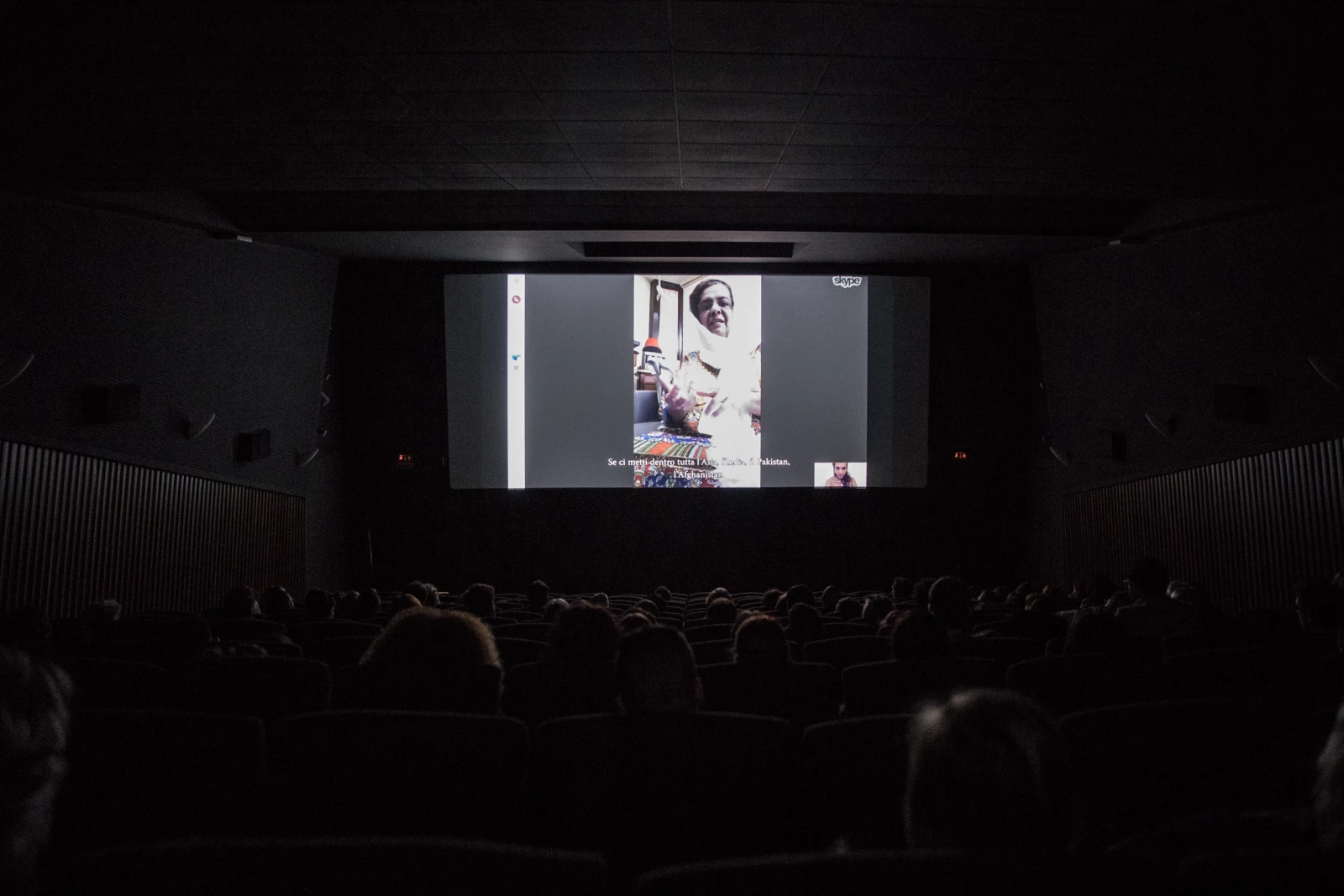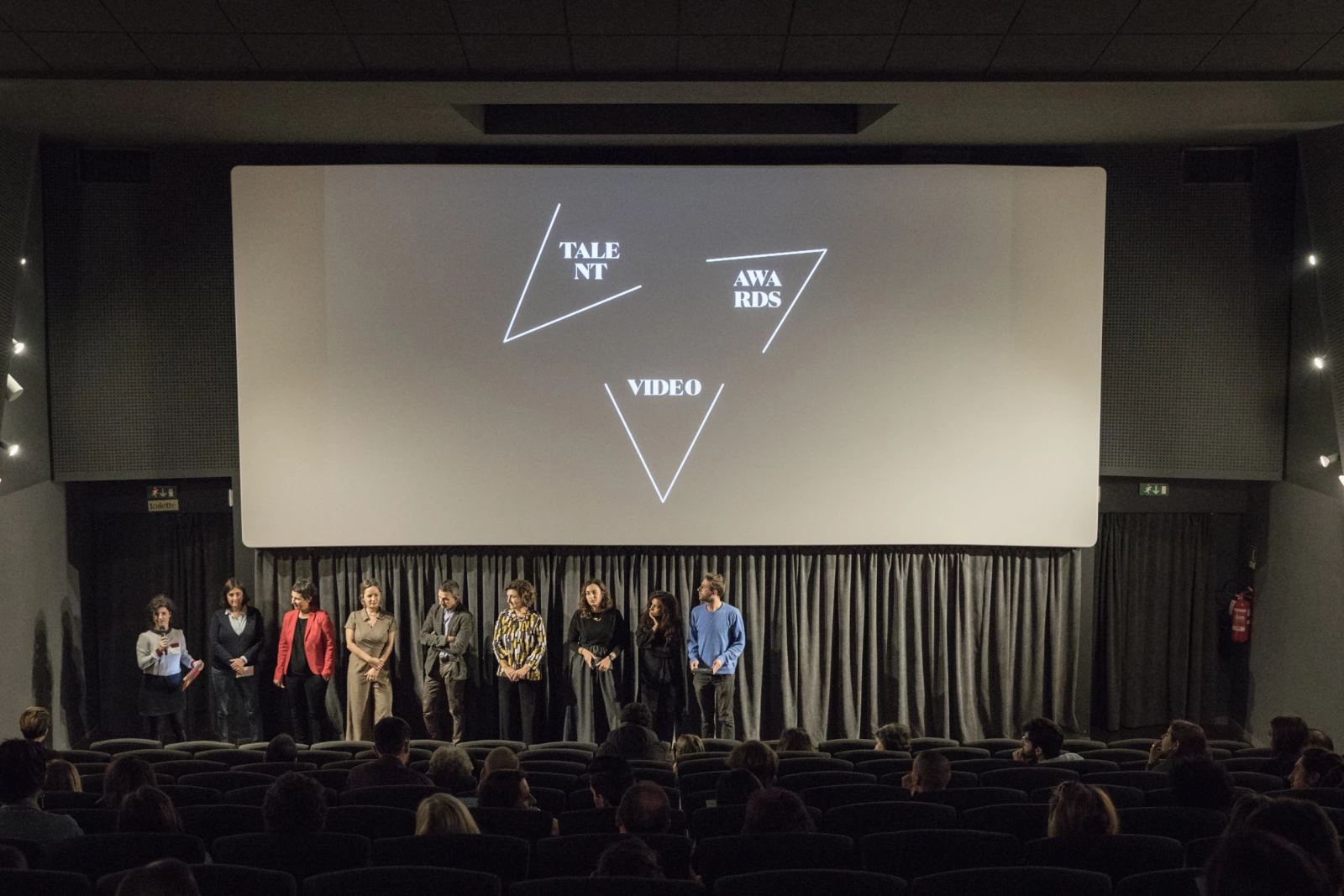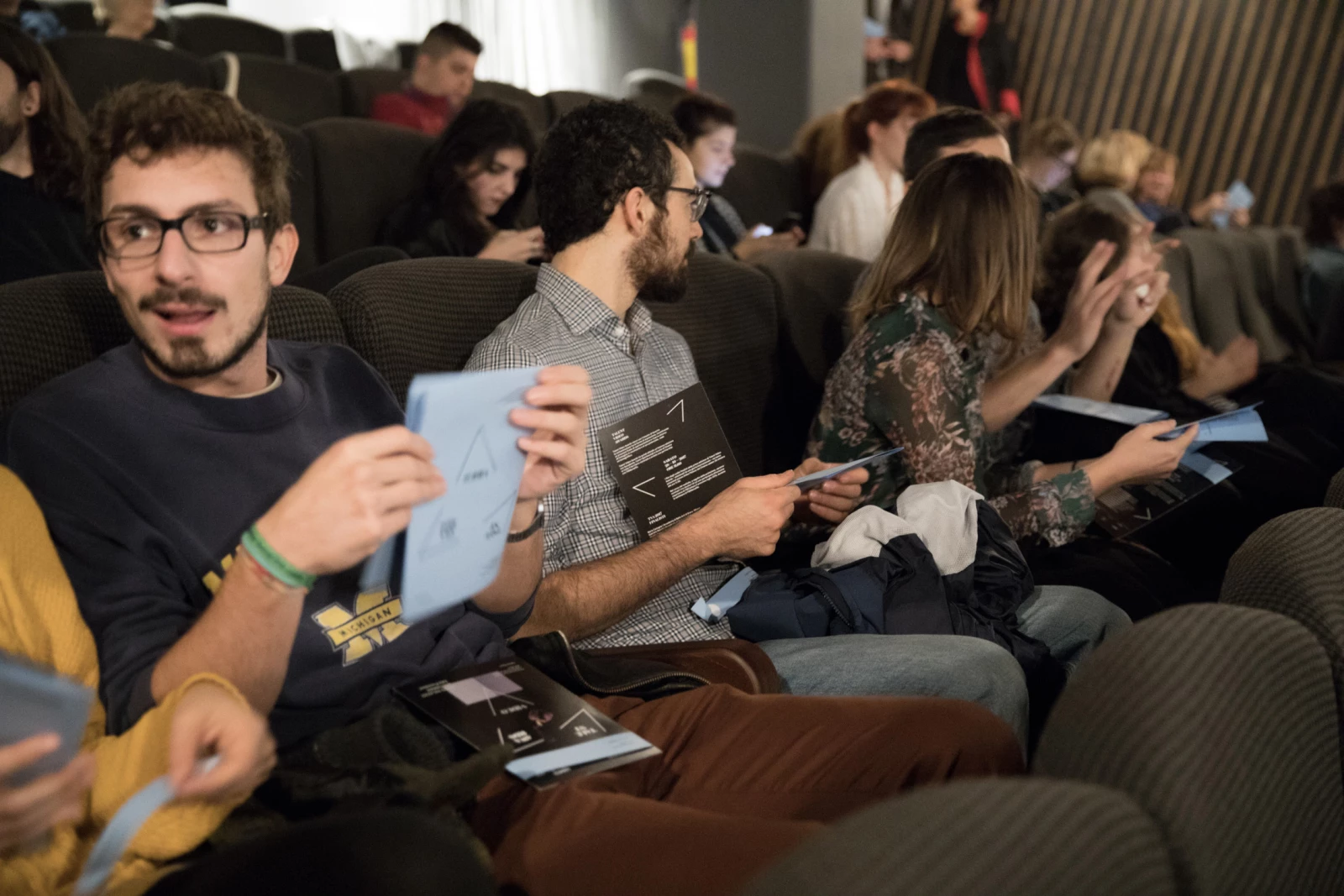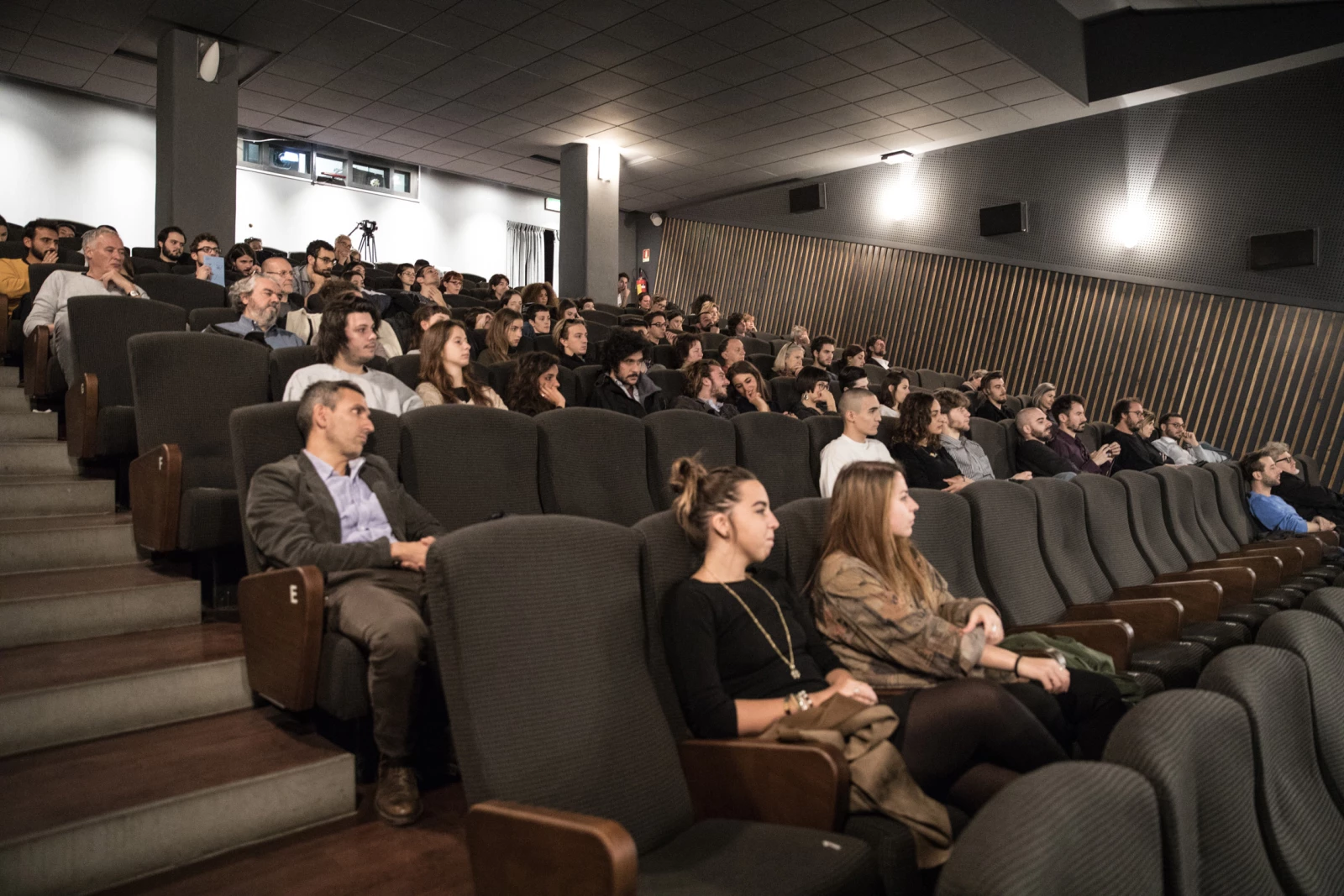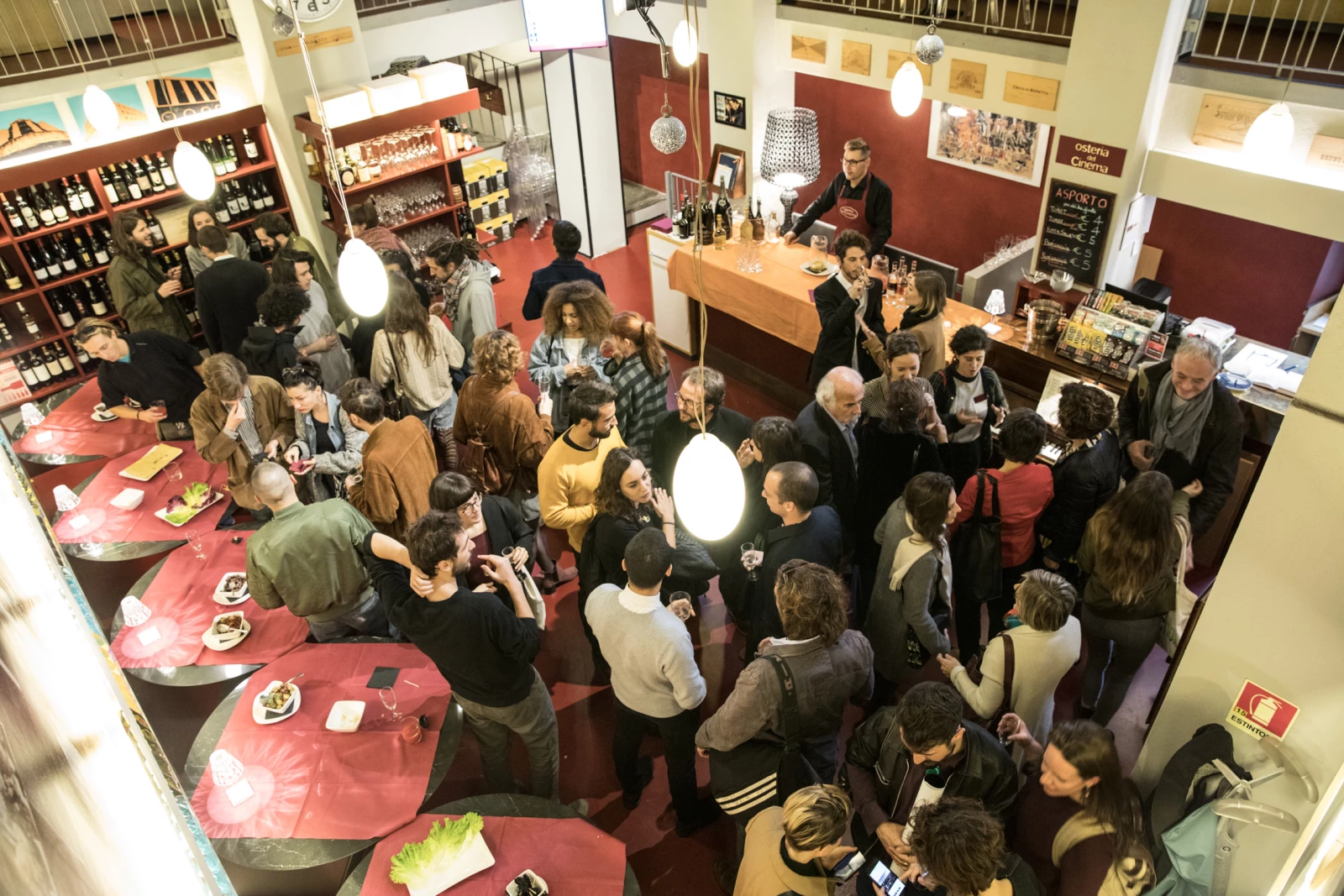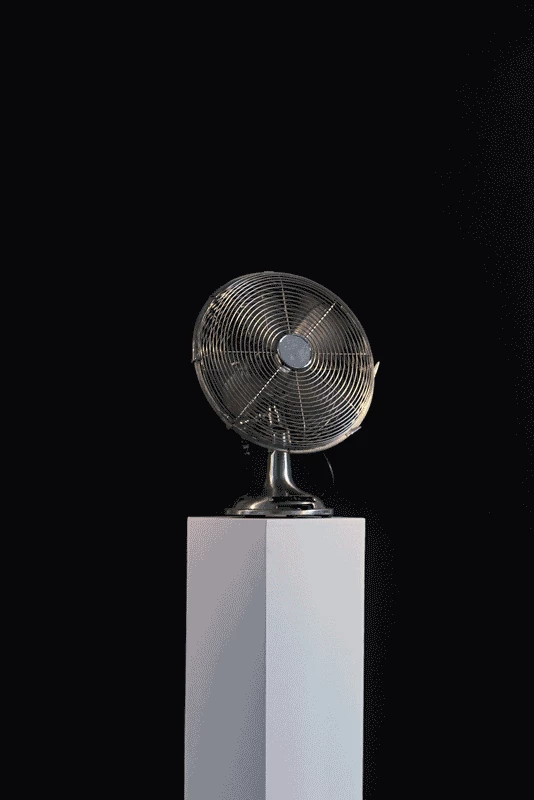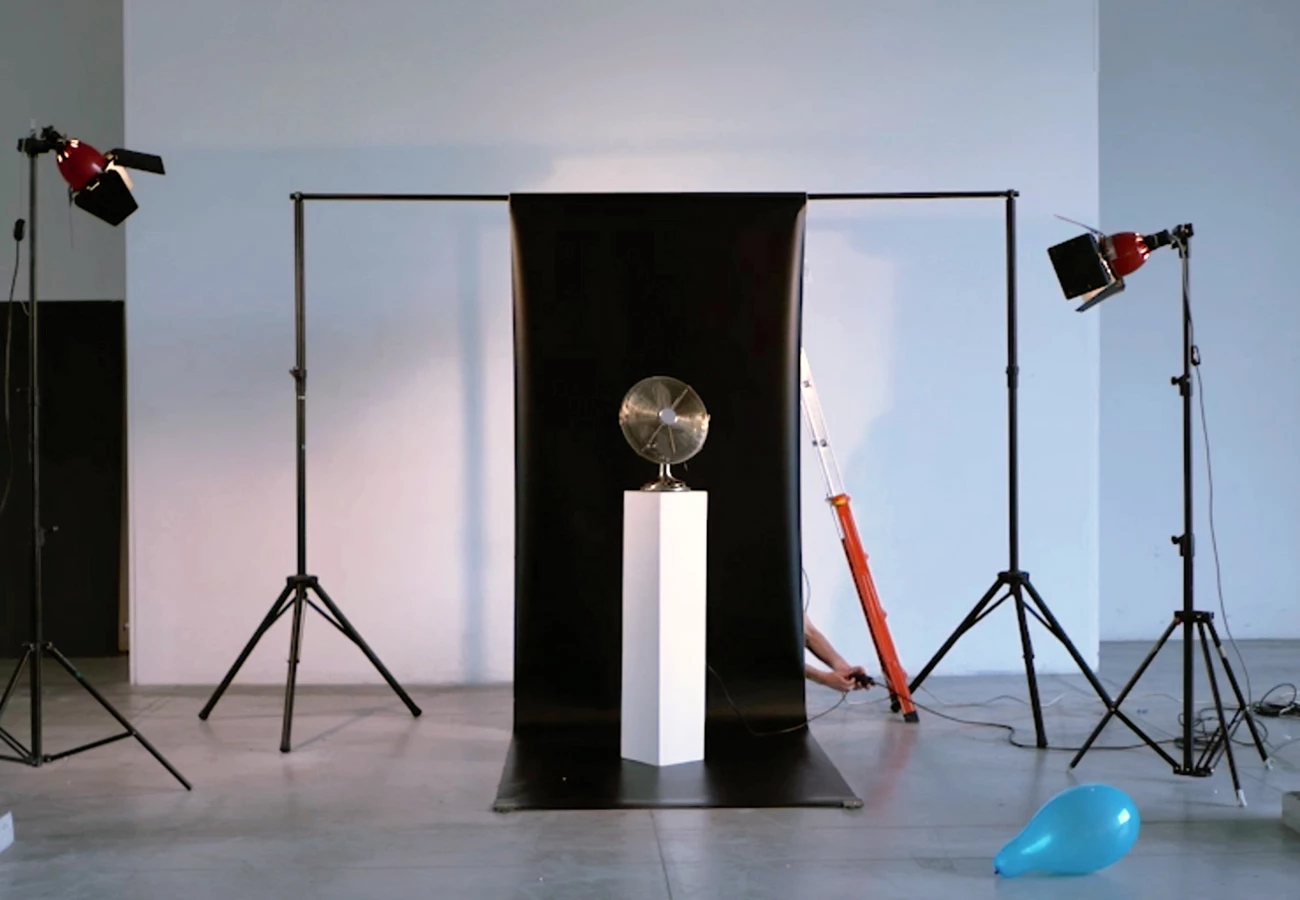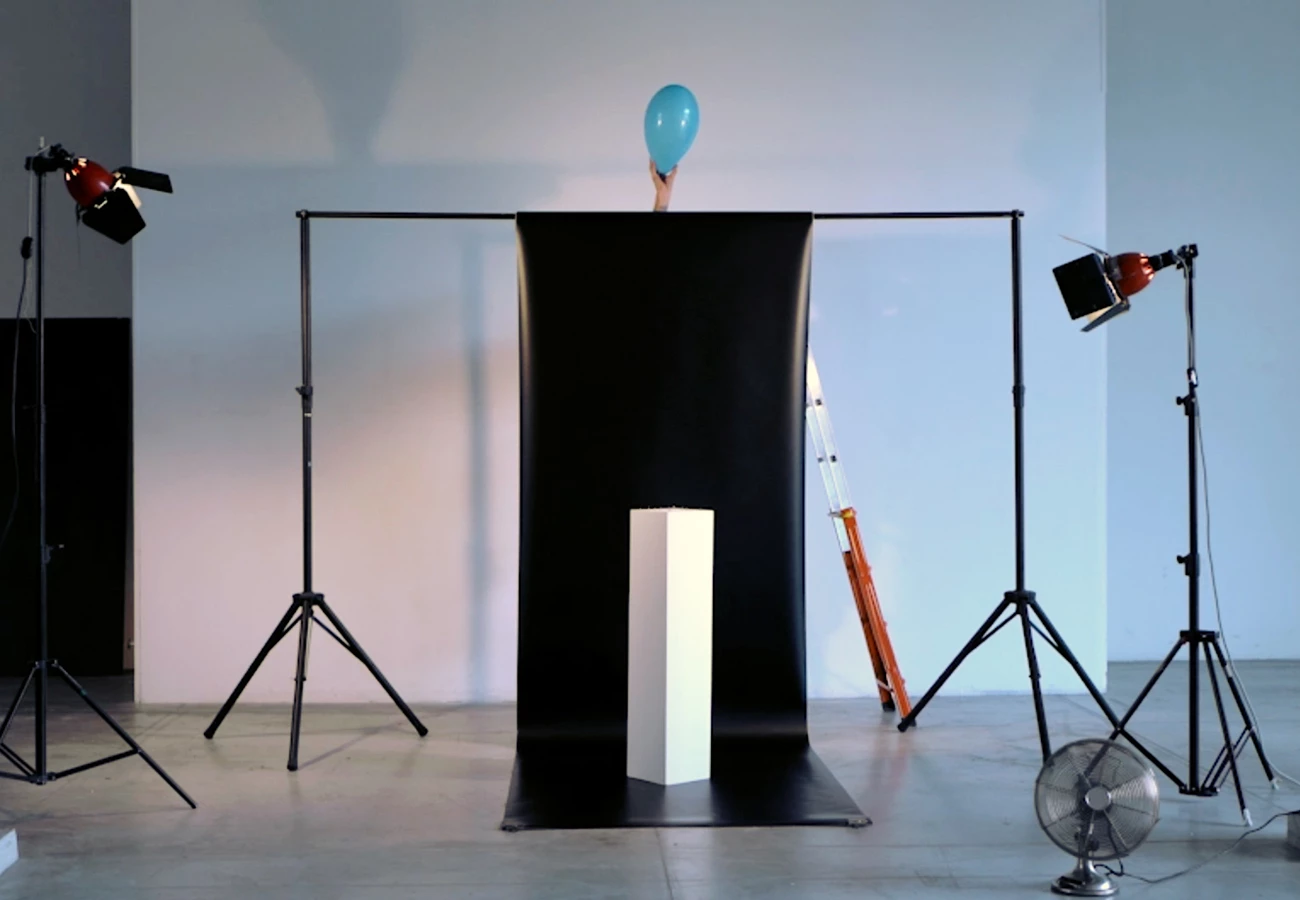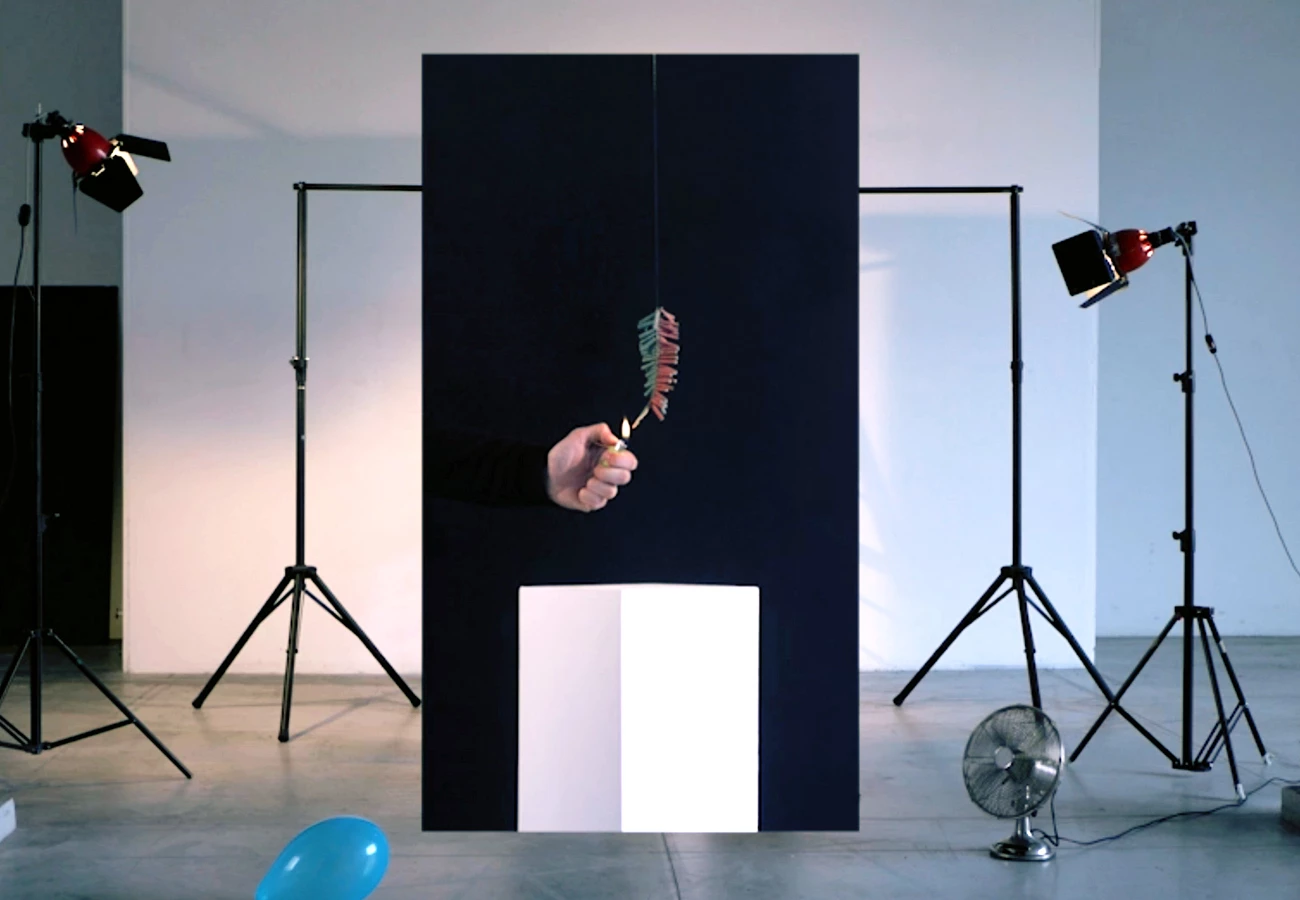Talent Video Awards
Uno sguardo sulle migliori produzioni video nelle Accademie di Belle Arti e nelle Scuole di Cinema Italiane
Talent Video Awards is a project by Careof and Direzione Generale Arte e Architettura Contemporanee e Periferie Urbane of MIBACT aimed at encouraging artistic production dedicated to moving images by identifying and awarding the best videos produced by emerging artists within the Accademie di Belle Arti and Cinema Schools across the national territory during the 2016-2017 academic year.
In particular, TVA aims to:
identify and promote emerging Italian video and film production through scouting activities within institutions responsible for artistic education;
develop alternative training models and opportunities for exchange and dialogue at the national and international levels;
encourage dialogue between the world of education and public and private institutions dedicated to art promotion such as Careof, DGAAP, and the partners involved in the project.
Through a public call, over 50 institutions including Academies, Experimental Centers, and Cinema Schools, along with their respective teachers and directors, were involved to carry out scouting activities among educational institutions, promoting video production and fostering the educational and creative processes underlying these productions. This first edition of the award also activated an important partnership with a formative and production entity such as FIDMarseille, one of the most interesting European film festivals for its original approach to formats, language, and content.
TVA was born with the intent to encourage an increasingly necessary cross-pollination of forms of expression, breaking down the conventional boundary separating cinema from art, to promote a fluid process of experimentation and research around moving images and their real and imaginative potential.
Giuria
Chiara Agnello is a curator at Careof, a non-profit organization that has promoted the development of contemporary artistic research since 1987. At Careof, she curates and produces various projects in collaboration with public and private institutions. Among others, she manages ArteVisione, an award for the production of a video work and a training program with professionals from the audiovisual sector developed in collaboration with Sky Academy.
Laura Barreca is a Professor of Art History at the Accademia di Belle Arti di Bari and teaches Media Phenomenology and History of New Media at the Accademia di Belle Arti di Palermo. Since 2014, she has been the Director of the Museo Civico di Castelbuono (Pa). She has curated solo and group exhibitions of Italian and international artists for museums, national and international foundations, including the Italian Pavilion at the 9th Shanghai Biennale (2012). She is the author of the essay Arte e Tecnologia. Dalle Avanguardie storiche alla New Media Art, 2013, Aracne Editore, and co-author of the volume Terrazza. Storie, artisti, luoghi in Italia negli anni Zero, Marsilio Editore, 2013.
Rebecca De Pas began working for festivals in 2004 at the Film Archive of the Cineteca di Bologna. In 2009, she joined FID Marseille as a selection committee member and co-manager of FIDLab, the international co-production platform. Alongside her commitment at FIDMarseille, she is currently involved in the selection committee for Berlinale Talents, where she is also a consultant for participating producers and for the Feature Expanded Program. In the past, she was the artistic director of the Journées Cinématographiques Dionysiennes and has collaborated with La Roche sur Yon IFF, the Horizons section of the Venice International Film Festival, the Riviera Maya Film Festival, and the Paris Environmental Film Festival.
Michelangelo Frammartino is an Italian director. In 2003, he made his feature film debut with Il dono (2003), presented at the Locarno Festival, followed by Le quattro volte (2010), presented at Cannes. In 2013, he created Alberi, a video installation that debuted at PS1 in New York and was presented in Italy by the Filmmaker Festival of Milan.
Carolina Italiano is responsible for special projects in contemporary art at the Direzione Generale per l’Arte e l’Architettura contemporanee e Periferie urbane, for which she has curated numerous projects in urban peripheries. She is part of the scientific committee of the exhibition Da io a noi. La città senza confini, the first contemporary art exhibition hosted at Palazzo del Quirinale. She currently coordinates the Italian Council project. Since 2004, she has worked at Darc – Direzione generale per l'architettura e l'arte contemporanee of MIBAC for the opening of the MAXXI Museum. From 2008 to 2014, she was responsible for B.A.S.E Arte (Biblioteca, Archivio, Studi, Editoria), the MAXXI study center. For the museum, she oversees all editorial production, research, and training activities.
Finalists and winner
Maria Castagna, Accademia di Belle Arti di Brera, Milan
Gabriele Macchi and Lucia Magnifico, Accademia di Belle Arti di Brera, Milan
Mireille Pigazzi, Accademia Carrara di Belle Arti Carrara, Bergamo
Simone Rossi, Daniele Costa, and Nicola Zolin, Università IUAV, Venice
Michele Sammarco, Civica scuola di Cinema Luchino Visconti, Milan
Patrizia Emma Scialpi, Civica scuola di Cinema Luchino Visconti, Milan
Luca Staccioli, NABA - Nuova Accademia di Belle Arti, Milan
Natália Trejbalová, Accademia di Belle Arti di Brera, Milan
Camilla Umbaca, Accademia di Belle Arti di Brera, Milan
Marco Villari, Accademia di Belle Arti di Catania
Federica Brace Zotti, Accademia di Belle Arti di Brera, Milan
The final selection of submitted works was shown during a public matinée inside the Sala President of the renewed Cinema Anteo on Saturday, October 28 at 11:00 AM and constitutes the material for the first digital box set of the award.
On this public occasion, the jury unanimously decided the winners of the first edition of the Talent Video Awards in the following order:
The first prize, consisting of the opportunity to participate in the exclusive FIDCampus experience during the week of FIDMarseille, next July 2018 — goes to the duo Lucia Magnifico and Gabriele Macchi from the Accademia di Belle Arti di Brera with the work Hawaii Point;
The second prize goes to Luca Staccioli from NABA - Nuova Accademia di Belle Arti di Milano with the film Was it me?
The third place winners, tied, are Patrizia Emma Scialpi from Civica Scuola di Cinema Luchino Visconti with the film Neith and Maria Castagna from Accademia di Belle Arti di Brera with the work Interview with Hessa Lootah.
They will be awarded vouchers for the purchase of goods or services at Moovie - Film Service Company in Milan.
Sinossi
Interview With Hessa A Lootah, 27' 56’’, 2017
Maria Castagna (Verona, 1991)
Accademia di Belle Arti di Brera, Milano
The conversation with Hessa A. Lootah, one of the first women from the United Arab Emirates to study mass communication, reflects on the relationship between Muslim women and the different historical-social contexts in which they live, exploring themes related to feminism rooted in Islamic religion. This specific feminist discourse questions the “power” Islam and legitimizes an alternative knowledge and interpretation to the traditional Islamic school. The movement indeed presents gender equality and social justice as integral ideas of the Quranic motives and, based on this, approaches Islamic theology by engaging with the text and canonical traditions. Muslim feminist women challenge the dominance of the Western model imposed as the only path to liberation and emancipation. The centralization enacted by the West—presumed as the only epistemologically and theoretically authorized territory for the production and enunciation of knowledge—has led to the construction of a Muslim female stereotype still rooted in colonial thought.
////////////
The weaning of good, 12' 55’’, 2017
Simone Rossi (Padova, 1993) | Daniele Costa (Castelfranco Veneto, 1992) | Nicola Zolin (Vicenza, 1992)
Università IUAV, Venezia
The work investigates the mechanisms regulating rhythms within port terminals, in particular the Multiservice and Container terminals of the commercial port of Porto Marghera, located in the Venetian industrial area. A mechanical symphony that tells the transfer of goods arriving from the sea or coming from long journeys, before reaching retail. Grains, heavy metals, foodstuffs, small-sized goods, inside hybrid and isolated spaces in the free zone. With silent curiosity and an investigative gaze, the photography dwells on the various dynamics that mark the times of open-air logistics.
////////////
Hawaii point, 12' 44’’, 2017
Gabriele Macchi (Gallarate, 1993) | Lucia Magnifico (Isernia, 1993)
Accademia di Belle Arti di Brera, Milano
Hawaii Point was filmed in the “Jungle” of Calais, the largest refugee camp in France, which for a year and a half “hosted” nearly ten thousand refugees. In this work, the gaze of a “special narrator” leads us inside this place, which he claims to be the sovereign of. Through his eyes, we learn about a fascinating, violent, and unhealthy place that nonetheless retains a strong character full of energy. In the “jungle,” a community spends time playing music and dancing, to cleanse the mind and imagine a new idea of time.
////////
Manuale di Conversazione, 8'03’’, 2017
Mireille Pigazzi (Monza, 1994)
Accademia Carrara di Belle Arti Carrara, Bergamo
The video is a sequence of a series of thoughts—real and imaginary—collected in different chapters. Fragments of stolen or reassembled conversations repeat in a loop to convey the cyclical dimension of speech and to understand, through language, the obsessions that characterize our living. The dialogues, delivered by the same narrator’s voice, present the multiplicity of meanings that words, differently assembled and interpreted, suggest.
/////////
Maria Vola Via, 15' 57’’, 2017
Michele Sammarco (Padova, 1991)
Civica Scuola di Cinema Luchino Visconti, Milano
The intimate and personal reconstruction of a rural village through the gaze of Angelo and Gabriella. The footage of the landscape and the gestures accompanying the daily life of the farmer couple tell the details of a small community in the Venetian countryside. It is May, and the village is preparing to welcome the Rogation procession, a religious ritual entrusting God with the land and its inhabitants.
////////
Neith, 5'32'', 2015
Patrizia Emma Scialpi (Taranto, 1984)
Civica Scuola di Cinema Luchino Visconti, Milano
Neith is a hypothetical satellite of the planet Venus, spotted by various astronomers starting in the 17th century and officially by Giovanni Domenico Cassini in 1686. In 1766, the director of the Vienna observatory, Maximilian Hell, published a treatise declaring that all observations of the satellite were optical illusions: Venus's image was so bright it was reflected by the eye, then re-entered the telescope creating a secondary, smaller-scale image of itself. The video feeds on this imaginary, linking this anecdote to the broader concept of vision and improvising a parallel between the figure of the artist and that of the astronomer. It is a brief walk undertaken by the terrestrial eye resting in space, never detaching from the encumbrance of earthly fissures.
////////////
Was it me? Screen Memories, 08' 06’’, 2016-2017
Luca Staccioli (Imperia, 1988)
NABA, Nuova Accademia di Belle Arti, Milano
A journey through unknown places, experiences, and memories of other people, in the apparent cancellation of geographic and existential distances, amid processes of acceleration and technological development. The work is composed of videos and photos found on sharing platforms and social networks which, together with historical images from online archives, create the narrative structure and suggest reflections and questions about the possibility of representation, the legacy of colonialism, the exotism intrinsic in the idea of travel and mass tourism, identity, and place as ambiguity.
////////
Some notes on your behalf, 5' 54’', 2017
Natália Trejbalová (Košice, Slovakia, 1989)
Accademia di Belle Arti di Brera, Milano
A sci-fi tale of the everyday, of the near future. The intimate and personal relationship of a user with an application that provides assistance for every need. An alternative as dystopian as it is reassuring, which processes personal data to predict needs and avoid wrong decisions.
////////////
Roots - Radici, 11' 11’’, 2017
Camilla Umbaca (Milano, 1994)
Accademia di Belle Arti di Brera, Milano
The work focuses on the construction of the female figure and how the condition of women has evolved from the 1970s to today, with particular reference to the artistic context. Pasqualina and Helen, closely related to the artist, are two women both born in the 1930s in very different social contexts. Both express opinions on issues related to the female sphere according to their own experience. The split-screen technique highlights, visually and conceptually, their respective cultural contrasts and different perspectives.
////////////
Mazzareddi, 10'21'', 2017
Marco Villari (Ragusa, 1993)
Accademia di Belle Arti di Catania
Turiddu Ricci tells his life story to his nephew. Born in a town in the province of Ragusa, he has lived and observed the world as a sailor. The documentary, alternating images of the place with archival footage, reconstructs an adventurous life, full of affection and passion, which the character Turiddu recounts with the warm tones of his voice and the visual power suggested by his memories.
////////////
Pet me please, 8'01'', 2017
Federica Zotti (Chiari, 1991)
Accademia di Belle Arti di Brera, Milano
The work explores the world of sexuality in the Daddy-Little dualism, paraphrased into a virtual dimension where Daddydom represents the dominant/paternal part and Littlegirl the submissive, linked to a childlike or adolescent world. The performer, immersed in a space dense with mass culture symbols, mimics these rules, marked by a female voice with the seriousness of a hostess preparing for a trip, leaving space for childish movements and expressions.
FIDCampus
ChatGPT ha detto:
FIDCampus is a platform for the exchange of young creations held during the Festival Internazionale del Cinema FIDMarseille, every year in July. It is a workshop for international film students, art schools, and young directors mainly from Europe, Mediterranean countries, and Taiwan. Between ten and fifteen young directors, selected based on their previous films, participate in this intensive training program. Each of them has the opportunity to discuss their work with renowned professionals (directors, editors, directors of photography, sound designers). They attend the FIDLab platform, FIDMarseille International Coproduction, and take part in a rich program of screenings that are part of the festival program. They also attend masterclasses and meetings with various industry professionals. The films from FIDCampus are presented to the public in various screenings within the festival program. Since 2013, over 60 young directors have participated in FIDCampus, coming from France, Morocco, Algeria, Tunisia, Egypt, Lebanon, Serbia, and Taiwan. Participants have previously worked with experts such as Caroline Champetier, Yann Dedet, Claire Atherton, Ghassan Salhab, Marie Voignier, Nicolas Becker, Alice Rohrwacher, Kama Al-Jafari, Dominique Auvray, Khalil Joreige, Oliver Laxe, Narimane Mari, Raed Andoni, Valérie Jouve, and Karim Moussaoui.
DGAAP
The Direzione Generale Arte e Architettura contemporanee e Periferie urbane - DGAAP - is the MiBACT office dedicated to contemporary matters.
DGAAP promotes and supports visual arts in their broadest sense, architecture, design, and the redevelopment of urban suburbs.
Institutions, public heritage, creative talents, and new generations are the subjects DGAAP addresses, with the aim of providing citizens with the best possible experience and contributing to the cultural growth of our country.
